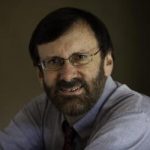The Father of Tantra — Pierre Bernard
At first glance, the neo-tantra movement, with its many books, videos, and workshops on “sacred sexuality,” looks like a hangover from the 1960s—echoes from the sexual revolution and what has come to be known as the New Age. But like most things New Age, tantra is not so new.
While we can trace some tantra teachings back 1,500 years or more, our modern, Western ideas about tantra emerged 150 years ago during the British occupation of India. The modern marketing of tantra as a spiritual commodity dates to the turn of the century and flowered—where else?—in San Francisco.
In this second blog on tantra, let’s travel back in time to a man known as Pierre Bernard. He appears to have been born in Iowa, in 1875, as Peter Arnold Baker. After arriving in California, he began claiming that he had left home as a teenager to travel to India and study “ancient Sanskrit writings and age-old methods of curing diseases of mind and body.”
In 1906, in San Francisco, Bernard founded the Tantrik Order in America and became known in the press as “the Omnipotent Oom.” He was a man “who could lecture on religion with singular penetration and with equal facility stage a big circus, manage a winning ball team, or put on an exhibition of magic which rivaled Houdini.”
Bernard soon got the attention of newspaper reporters in California who described how he catered to young women interested in learning hypnotism and “soul charming”—by which they meant the mysteries of the relations between the sexes.
He founded his tantric temple the same year that the great San Francisco earthquake and fire devastated the city, prompting him to relocate to New York, where he opened his “Oriental Sanctum” in 1910. Sensational stories soon appeared in the New York press. Reporters who staked out his temple heard “wild Oriental music and women’s cries, but not those of distress.”
In New York, Bernard was arrested and charged with kidnapping a woman named Zella Hopp. “I cannot tell you how he got control over me,” she tried to explain. “He was the most wonderful man in the world. No women seem able to resist him.”
One article published in the San Francisco Chronicle in 1910 was headlined “High Priest Faces Jail—Sensational Tale of Orgies.” It quotes another young woman recruited into the order as a “sacred nautch (dancing) girl,” who testified that Bernard told her, ‘In my sacred capacity I cannot marry, but our nautch girls serve us as wives.’”
The kidnapping charges were dropped and Bernard moved his “love cult” to a seventy-two-acre estate in Nyack, New York, where he took over a girls’ academy and began transforming it into a “utopian Tantrik community.” He then went on to open a chain of tantra clinics in Cleveland, Philadelphia, and Chicago.
His clinics attracted a wealthy clientele fascinated by Bernard’s blend of sex and spirituality. Police raided one clinic and reported finding his followers divided into two tiers. Novices gathered downstairs practiced hatha yoga postures. Upstairs, on canvas-covered mattresses, members of the “Secret Order of Tantriks” engaged in more esoteric rituals. Bernard saw the sex drive as “the animating spirit of the world.” He was said to “give his followers a new conception of love . . . to teach men and women to love, and make women feel like queens.”
Despite the scandal surrounding his life, Pierre Bernard eventually managed to find respectability in Nyack social circles. He invested in baseball stadiums and dog tracks, collected Rolls Royces, and in 1931 became president of the State Bank of Pearl River. Reportedly worth $12 million at the height of his career, Bernard died in New York City in 1955 at the age of 80. He was remembered as a “curious combination of the businessman and religious scholar.”


